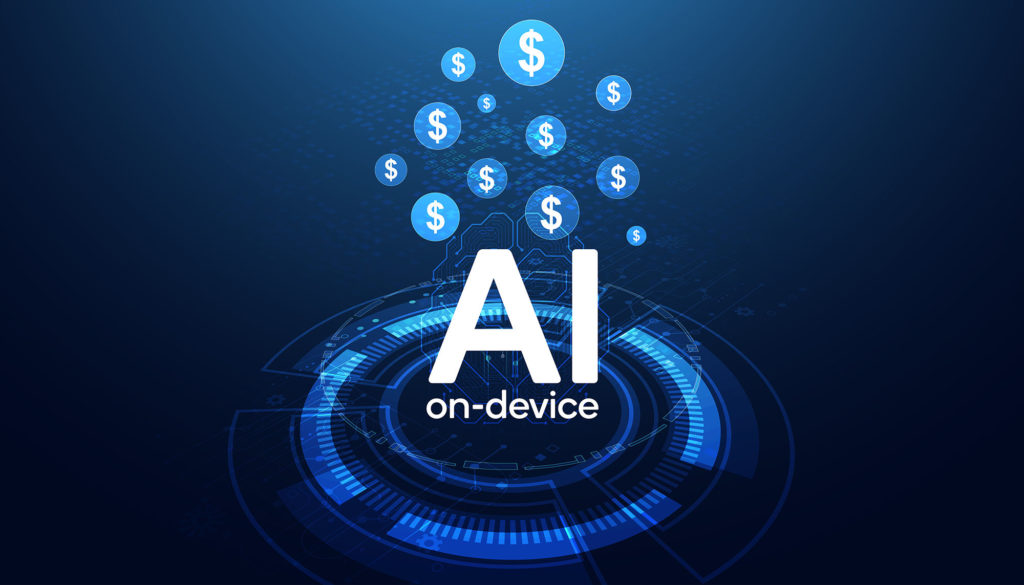This blog post was originally published at Qualcomm’s website. It is reprinted here with the permission of Qualcomm.
The potential for generative AI is unlimited
Generative artificial intelligence (AI) is so powerful, it’s impacting aspects of the human condition, driving innovation across industries, creating new consumer and enterprise applications, and stimulating revenue growth. And as tech companies continue to push the technology forward, analysts are working to determine the economic impact of generative AI.
The inherent value of generative AI
To forecast the growth of a new technology, you must first understand the underlying value of the technology, how it relates to other segments of the market and how it compares to previous technology transitions. Generative AI is particularly challenging because of its broad value proposition.
Like traditional (or non-generative) AI, generative AI has the potential to improve productivity by solving problems outside the capabilities of humans, making humans more efficient and/or automating functions performed by humans, but it goes much further. Generative AI has the potential to analyze information in new and unique ways to:
- Propose new designs and solutions to previously unsolvable problems.
- Create content ranging from text to metaverses.
- Provide unique digital experiences, customizing information that is unique to the situation, the application and/or the user.
In some cases, generative AI will even replace traditional AI models. As a result, the opportunities to impact the way we learn, work, play and live are endless. So, how do you put a value on endless possibilities?
Generative AI will broadly improve economic output across industries and increase GDP.
Generative AI is driving economic growth
With such a wide range of applications, the forecasts for the value of generative AI vary greatly from hundreds of billions of dollars to trillions of dollars. The only consensus is that the economic impact of generative AI can be huge. How huge depends on how you look at it.
On the low end, Statista Market Insights estimates the size for the generative AI market at $44.89 billion in 2023 increasing to $207 billion in 2030.1 Statista cited potential in many areas of growth including personalized user experiences, creative content generation and personalized medical treatment plans.
Alternatively, Bloomberg Intelligence recently reported on the AI economy and found that the generative AI market is poised to grow at a 42% compound annual growth rate from $40 billion in 2022 to $1.3 trillion over the next ten years.2 The article states, “The largest drivers of incremental revenue will be generative AI infrastructure as a service ($247 billion by 2032) used for training LLMs, followed by digital ads driven by the technology ($192 billion) and specialized generative AI assistant software ($89 billion).” On the hardware side, “revenue will be driven by AI servers ($132 billion), AI storage ($93 billion), computer vision AI products ($61 billion) and conversational AI devices ($108 billion).”
McKinsey & Company analyzed 63 generative AI use cases to solve specific problems across 16 business functions and determined that generative AI could add $2.6 trillion to $4.4 trillion in economic benefits annually.3 75% of the total annual value from generative AI use cases will be driven by customer operations (e.g., chatbots and representative support), marketing and sales (e.g., media development and personalized communications), software engineering (e.g., code development and maintenance), and R&D (e.g., design, simulation and test) across all industry sectors. Combined with “the myriad increases in productivity that are likely to materialize when the technology is applied across knowledge workers’ activities — [the total economic benefit of generative AI] amounts to $6.1 trillion to $7.9 trillion annually.” This is in addition to the $11 trillion to $17.7 trillion of economic value from non-generative AI annually.
Compared to the annual gross domestic products (GDPs) by country, the total value of generative AI would rank as the third largest country in terms of annual GDP value for 2022, according to Worldometer, behind only the United States and China.4 Note that this McKinsey & Company forecast was just for business applications, meaning that the value would be even larger if consumer applications were included.
Beyond GDP growth, generative AI will provide value by enhancing our experiences.
The multiple aspects of value
Despite the impact on GDP growth, generative AI value cannot be measured in dollars alone. Generative AI has the potential to enhance people’s lives in ways we never imagined, such as being made aware of information that you would not have known to ask for, like spontaneous suggestions for an alternative route to school or work, for new content that fits with your interests or preferences, or for news that impacts your career, investments or family.
There are also potential savings from increasing productivity. Generative AI has the potential to offload tasks making people more productive both in their professional and personal lives.
Few technologies have had the broad and rapid impact of generative AI. The economic potential of generative AI is vast, and its impact is just beginning to be understood. However, one thing is clear, the generative AI economy is going to be huge.
References
- Statista Market Insights (Aug 2023). Generative AI – Worldwide. Retrieved on Sep 11, 2023 from: https://www.statista.com/outlook/tmo/artificial-intelligence/generative-ai/worldwide#market-size
- Bloomberg Intelligence (Jun 1, 2023). Generative AI to become a $1.3 Trillion Market by 2032, Research Finds. Retrieved on Sep 11, 2023 from: https://www.bloomberg.com/company/press/generative-ai-to-become-a-1-3-trillion-market-by-2032-research-finds/
- Chui, M., Roberts, R., Yee, L., Hazan, E., Singla, A., Smaje, K., Sukharevsky A., Zemmel, R. (Jun 14, 2023). The economic potential of generative AI: The next productivity frontier. Retrieved on Sep 11, 2023 from: https://www.mckinsey.com/capabilities/mckinsey-digital/our-insights/the-economic-potential-of-generative-ai-the-next-productivity-frontier
- Worldometer. GDP by Country for 2022. Retrieved on Sep 11, 2023 from: https://www.worldometers.info/gdp/gdp-by-country/
Pat Lawlor
Director, Technical Marketing, Qualcomm Technologies, Inc.
Jerry Chang
Senior Manager, Marketing, Qualcomm Technologies




